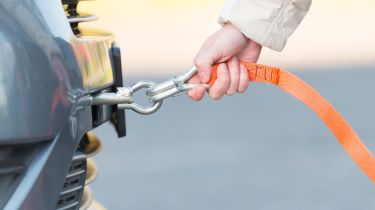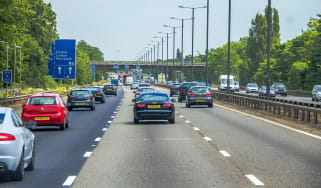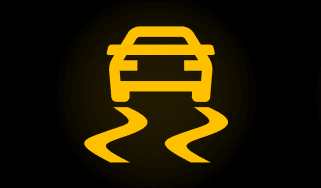How to tow a car
Towing a car is a tricky skill, but it could come in handy if you find yourself stuck at the side of the road

Whether your car has broken down, run out of fuel, or you’re helping a friend, knowing how to tow a car can save you from a sticky situation. As a general rule, you should only resort to towing a car yourself once all other options have been exhausted – a professional recovery service may be expensive, but it’ll often be quicker and safer than trying to attempt it yourself.
That said, by following the steps outlined in this guide, you’ll be able to tow a car both legally and safely.
This guide applies to a car with a combustion engine and a manual gearbox being towed. If you wish to tow a car with an automatic gearbox, check the car’s handbook as it may not be possible.
In most cases, it is not possible to tow an electric car as they do not have a conventional neutral gear. While some EVs do have a dedicated ‘tow mode’, we recommend enlisting a professional recovery service to prevent causing any damage to the battery or other components.
Towing a car: what you’ll need
Aside from a willing and trusted volunteer, you’ll need four important pieces of kit before you can tow your car:
- A suitable vehicle for towing
- A tow rope, strap or towing bar
- Two towing ‘eyes’
- An ‘On Tow’ sign
A car’s maximum towing capacity will be published in the handbook – you should never attempt to tow anything heavier than this. As a rule of thumb, don’t attempt to tow a car that’s significantly heavier than the car doing the towing. Using a MINI to tow a Bentley will only end badly.
The tow rope, strap or towing bar will have a maximum weight capacity as well, so make sure the car being towed doesn’t exceed this limit. You can purchase a tow rope or bar from a motoring supplier, such as Halfords.
Towing ‘eyes’ are metal brackets that a tow-rope attaches to. On some older cars, they’re structural and found under the front or rear of the car, while modern cars usually have a metallic ring that screws into a socket at the front or rear of the vehicle. The ring is usually found with the car’s tool kit or spare wheel.
Most tow ropes or towing bars will include an ‘On Tow’ sign. It must be hung from the rear of the car where it’s clearly visible, to warn motorists following behind that you’ll be travelling slowly and not to pull into the gap between the tow car and the one being towed.
How to set up a car for towing
Follow these steps to set up both cars for towing and be sure to double check each step before setting off.
- Locate or screw in the towing eyes. The mounting for the towing eyes is often concealed behind a plastic cover in the front or rear bumper and you may need a screwdriver to prise this open. Remove the covers and screw the towing eye securely into the socket. It may sound obvious, but you must use the rear towing eye of the car doing the towing and the front towing eye of the car being towed – i.e. both cars must be facing forward when towing.
- Attach the tow rope, strap or towing bar to the towing eyes. Do not attempt to attach the rope or bar elsewhere, as this could lead to significant damage or injury. Note that a towing bar will be significantly shorter than a tow rope. If you’re using a towing bar, you’ll need to carefully reverse the tow car until the bar reaches between the two towing eyes.
- Hang the ‘On Tow’ warning sign at the rear of the car being towed in a position where it’s clearly visible to following traffic.
How to tow
The driver of the tow car and the driver of the car being towed must be aware that both cars will steer differently compared to normal driving. It will be most notable when pulling away but the cars will continue to behave differently while on the move as well. The driver of the car being towed will need to make additional steering inputs to accurately follow the tow car. This is why it is essential to drive slowly and cautiously while towing.
Before setting off, the drivers should arrange a set of signals to aid communication while on the move. For example, you can use short or long beeps of the horn to communicate ‘slow down’ or ‘pull over’.
For the driver of the lead car:
If using a tow rope, set off very slowly. Let the rope slowly build tension before trying to move the tow car. Once the rope is under tension, move off gently and keep your speed below 15mph or so.
As a tow bar is solid, you do not need to let it build tension, but you should set off just as slowly nevertheless. Make sure there’s plenty of space in front and and behind when pulling out, as other road users may not immediately notice you’re towing another car.
Avoid any sudden manoeuvres. You want to give the driver of the car being towed plenty of time to react to your inputs. Indicate well in advance and press the brake pedal very gently to illuminate the brake lights before slowing progressively.
Take corners slowly, gently and wider than you would normally. If you take them too tightly, the tow rope or bar could pose a danger to pedestrians or cut across the verge. It could also be damaged and snap, leaving the car being towed with no power to drive to safety.
Keep an eye on the car’s dash instruments for any sign the car is under strain, such as a rise in water or oil temperature or any warning lights appearing. If this happens, pull in gently and safely to the side of the road to avoid two broken down cars.
For drivers being towed:
Take off the handbrake and turn the key in the ignition to release the steering lock. If you’re in a manual car, make sure the gearbox is in neutral. If your car has four-wheel drive or an automatic gearbox, consult the handbook for the manufacturer’s advice on towing.
As the engine isn’t running, it’s likely that your steering and brakes will lose their power assistance. This means that they will feel much heavier than normal and will require additional force.
Watch the lead car very closely. You’re going to be braking and steering according to what they’re doing. With only a few metres of rope between the two cars and no power assistance, reactions are key. If you’re using a tow bar, remember that these aren’t designed to act as a brake. If you’re using a rope, try to keep this tight at all times. If it becomes slack, very gentle braking can tighten it up again and avoid the rope or strap becoming damaged by rubbing on the road’s surface.
Although ultimate responsibility resides with the driver doing the towing, you have to coordinate your braking and steering with their movements.
Look out for brake lights and indicators coming on, and be prepared to act gently yet decisively. If you’re uncomfortable with being towed, use the prearranged signals so the lead car can pull over.
Rules for towing a car
You also need to be aware that specific rules exist with regard to towing a car:
- You cannot tow a car on the motorway.
- If you are towing in the dark, the car being towed must have its lights on.
- The vehicle being towed must be taxed, registered, insured and have a valid MoT as with any other vehicle using the public road.
- A tow rope should not exceed 4.5 metres in length. If the rope is longer than 1.5 metres, then you should tie a coloured cloth to the centre to make it visible to other drivers.
- All drivers can tow up to 3,500kg under new rules introduced in 2021, so there’s little need to worry about exceeding a legal weight limit. Just remember never to exceed a tow car’s maximum towing capacity or the towing capacity of the tow rope or bar.
Frequently Asked Questions
Yes, both cars need to be insured and road legal, even if the car being towed has broken down. It must also be taxed and have a valid MoT if required.
If you suspect your car has a flat battery, read our guide to jump starting a car...
Recommended

Classic car tax exemption: which historic vehicles qualify?
Most Popular
Tips & advice

Car dashboard warning lights: what does each symbol mean?

Electric car charging stations: public networks, charger types, apps and maps








